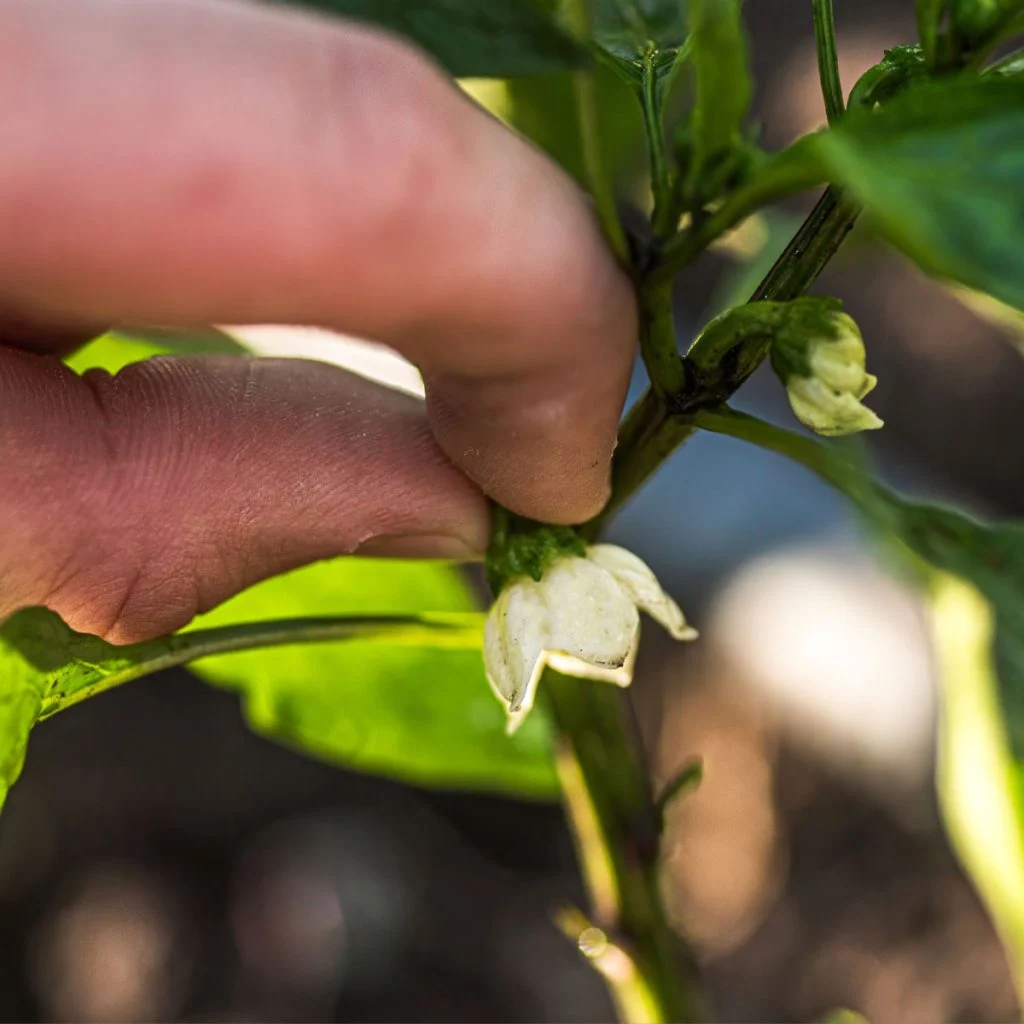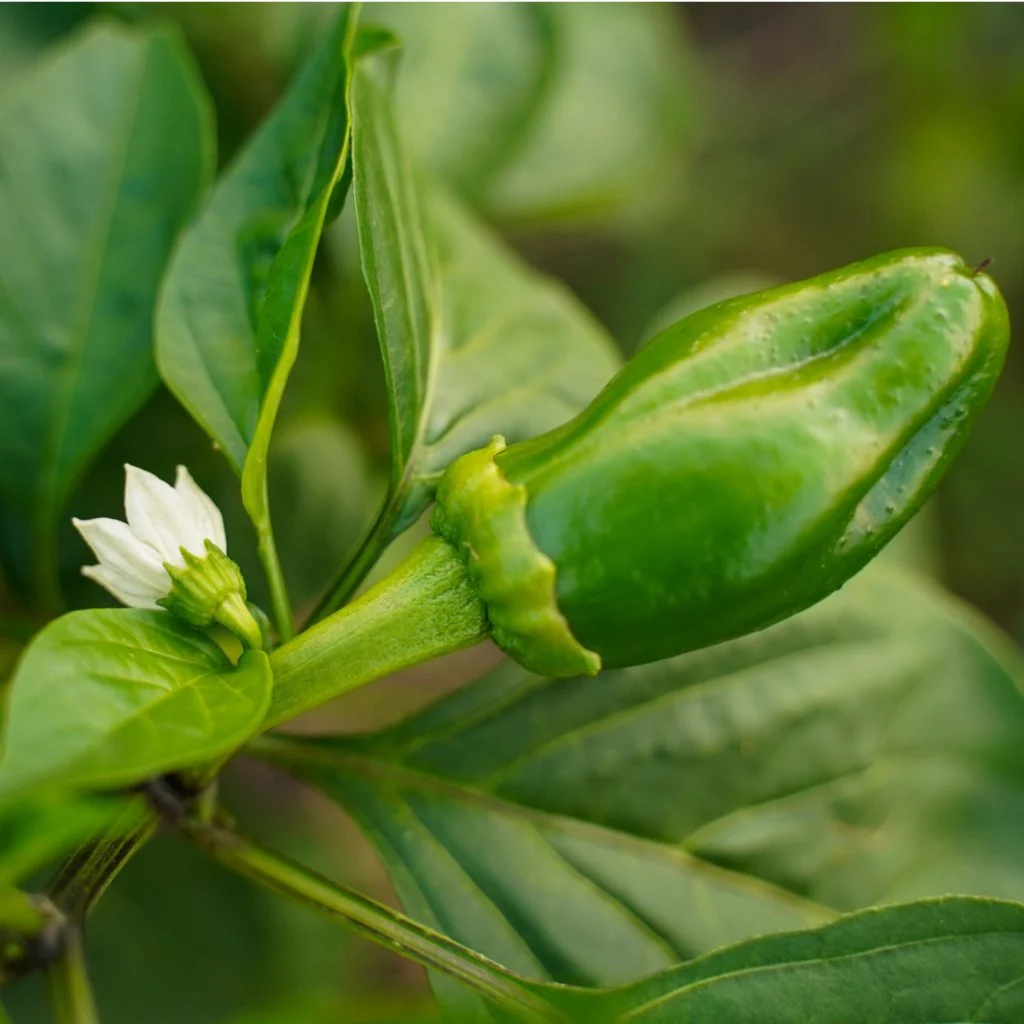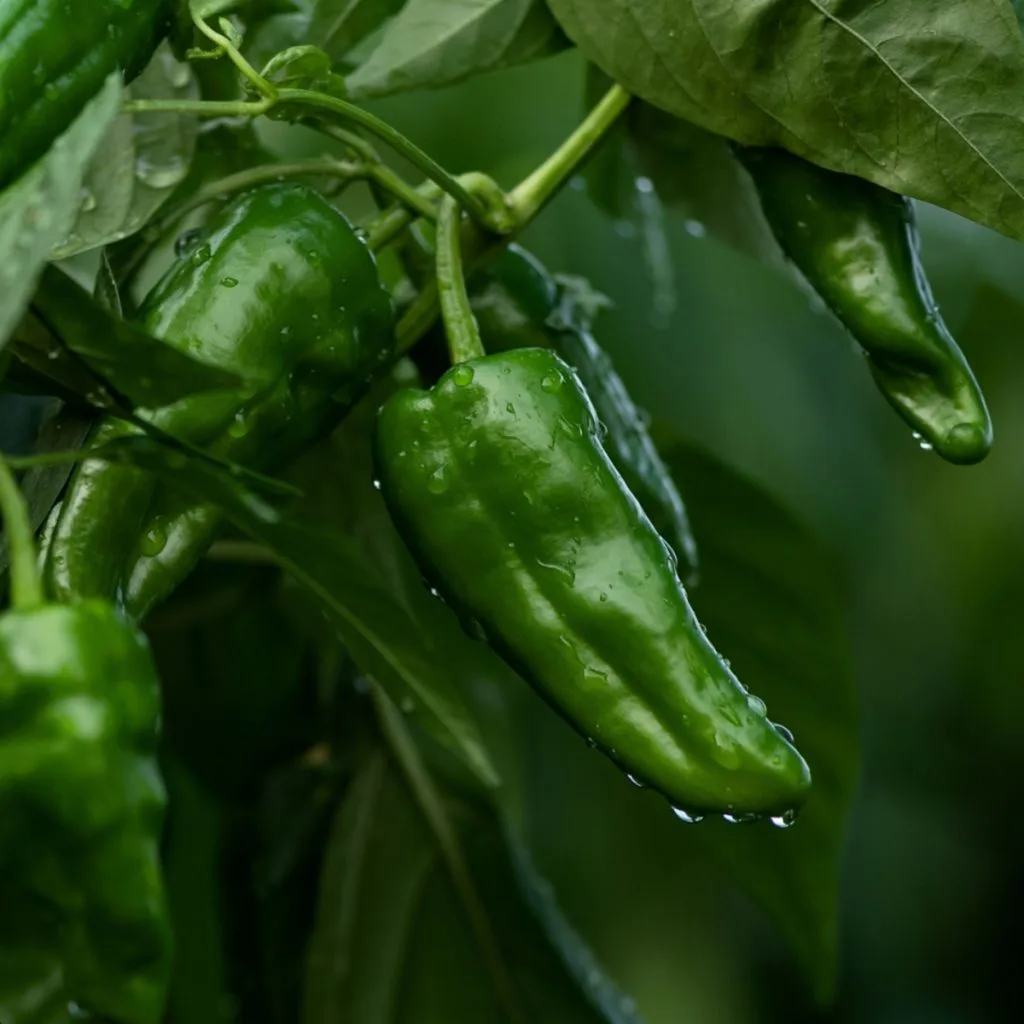One of the best ways to set your young pepper plants up for big success and a big harvest this summer to prune them right from the start – and that includes pruning off the plant’s first blooms and fruit!
When you first plant young pepper plants in your garden, it’s always exciting to see blossoms forming early. Even more so when those blossoms start to produce little peppers within the first couple of weeks.
But as tempting as it is to let those early blooms and fruit continue to grow, it’s actually one of the worst things you can do for your pepper plants in the long run. As it turns out, removing those early flowers and any developing fruit is one of the most important tasks for growing strong, productive pepper plants.

In fact, pruning not only helps to shape the plant, but it also saves valuable energy. Energy the plant needs early to establish a powerful root system and a thick base of foliage. Here is a closer look at why pruning young pepper plants is a must. And even more – how to do it the right way!
Why It’s A Must To Prune Young Pepper Plants
Why Remove Early Flowers And Fruit
One of the first signs that young pepper plants are doing well is they begin to push out blossoms. These can start forming just a week or two after transplanting. Especially if weather conditions are warm and favorable.
But as great as those first flowers and fruits may look, they are not good for the long-term success of the plant. Young pepper plants need time to settle in after being transplanted. The early phase of growth needs to be all about developing a strong and deep root system.
Pepper plants also need to build a strong set of main stems and a thick layer of foliage. The early flowers take away from all of that. Instead of putting energy into expanding its roots and stems, the plant begins to use its limited resources to support blossoms and the first fruits.
Unfortunately, the first fruits that form take the longest to ripen. Even worse, they take up a lot of energy – energy the plant desperately needs to grow larger and stronger.

For this reason, all blossoms and fruit that appear within the first four weeks after planting should be removed. This helps direct the plant’s energy back into growth, not fruit production. A stronger plant early on is able to support a much heavier load of peppers later in the season. One thing is for sure – the difference it makes is dramatic!
How To Prune Early Flowers & Fruit From Young Pepper Plants
The process of removing early blossoms and fruit is easy and takes just seconds to do. As you walk through your garden each day or every few days, inspect your pepper plants. If you see any blossoms beginning to form, snip them off with a sharp pair of scissors or your fingers.
Be sure to also remove any tiny peppers that might be forming from early blooms you missed. The plant will naturally try to produce fruit if the blossoms remain, so getting them off early is key.
This process should continue for the first four full weeks after transplanting. By the end of week four or five, your plant should have developed to a point where it can begin to support flowering and fruit production without sacrificing its overall health.
After this point, you can let the flowers bloom and begin setting fruit. You’ll be amazed at how much more productive and vigorous your plants will be by the middle and end of summer.

Pruning The Lower Branches For Better Growth
Along with taking off early flowers and fruit, pruning the lower portion of pepper plants as they grow is another great way to boost performance. As the plant begins to increase in height and width, start pruning the lower 10 to 12 inches of branches and leaves from the base of the plant.
Why prune the lower portion? For starters, removing the bottom leaves allows air to move freely around the base of the plant. This helps reduce the chances of disease, mold, or mildew forming, especially in humid or wet conditions.
When the bottom is cleared, light can reach further down into the plant. This helps the plant stay healthy and encourages more balanced growth. And a plant that gets light and air from all sides will be far stronger overall.
Keeping leaves and stems off the soil line also helps prevent pests and disease. Soil can splash up during watering or rain, and many fungal and bacterial problems live in the soil. By removing the lower leaves, you reduce the chances of soil-borne issues infecting the plant
Start this process gradually around the third or fourth week after planting. Avoid removing too much at once. Remove just a few inches at a time as the plant continues to grow. Eventually, try to get a clean base with about 10 to 12 inches of clearance between the soil and the first layer of leaves and branches.

Make Sure To Feed Your Peppers!
As important as pruning is, proper feeding is just as critical for strong growth and big harvests. See: The Best Way To Fertilize Pepper Plants
Once your pepper plants have been in the ground for a week or two, begin feeding them with a liquid fertilizer every ten to fourteen days. The key is to use a fertilizer that has a higher amount of phosphorous (P) and potassium (K) than nitrogen (N). Affiliate Link: Jack’s Classic 12-15-30 Veggie Feed Water-Soluble Fertilizer
Phosphorous helps build strong roots and promotes blooming. Potassium helps overall plant health and supports the development of quality fruit. Too much nitrogen at this point will push the plant to grow more foliage, resulting in fewer flowers and less fruit.
When using a liquid fertilizer, dilute it to half the recommended strength. This gentle approach allows the plant to absorb nutrients gradually. Feeding every 7 to 10 days with this mild mix will help keep the plant consistently powered without creating growth surges that can damage or stress the plant.
Here is to taking the time to prune your young pepper plants – and to a big harvest this summer!
Simple Garden Life
Follow Our Facebook Page For Even More Great Tips! Simple Garden Life Facebook Page
Simple Garden Life is a website dedicated to keeping gardening fun, simple and enjoyable! We publish two new articles each week along with a new garden podcast episode every two weeks. This article may contain affiliate links.
